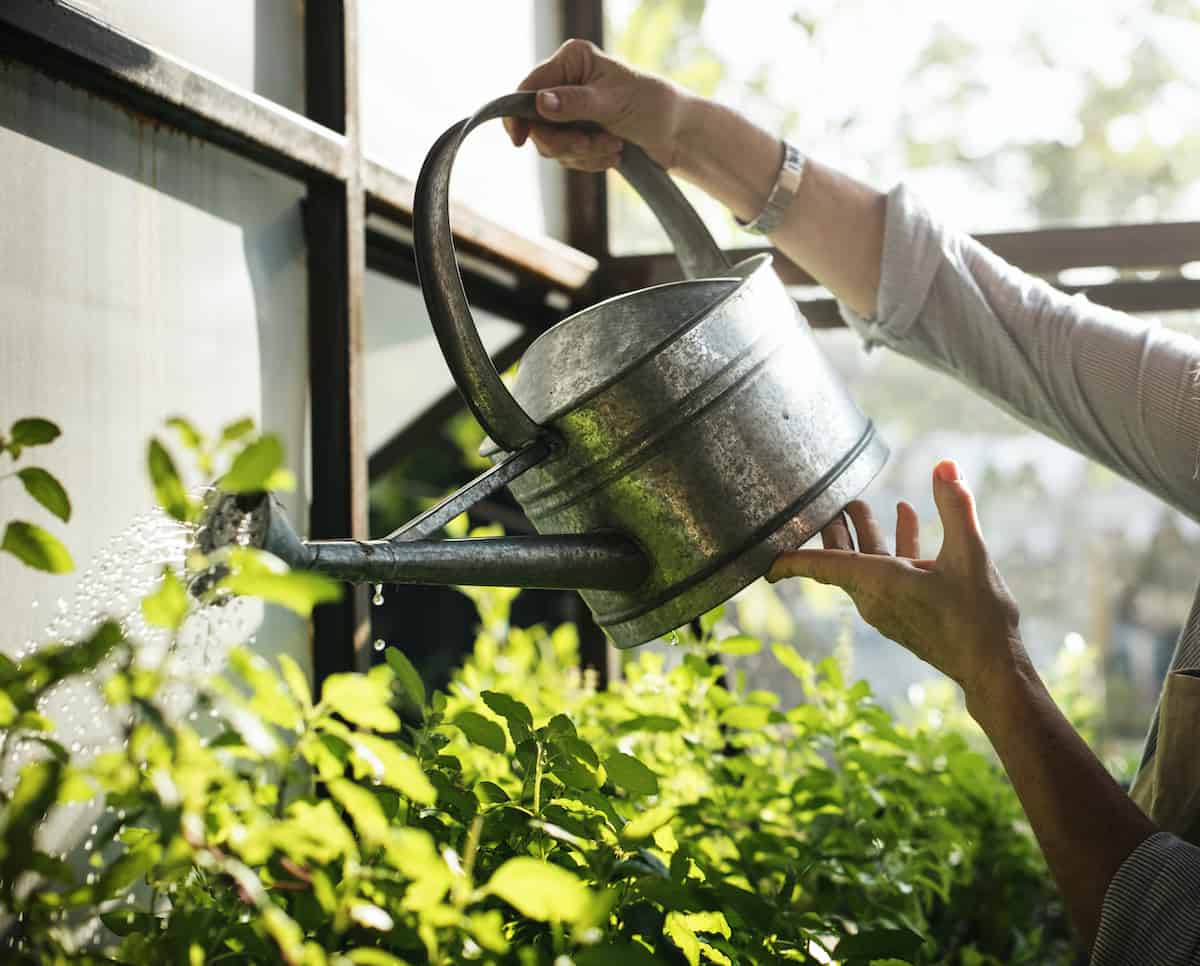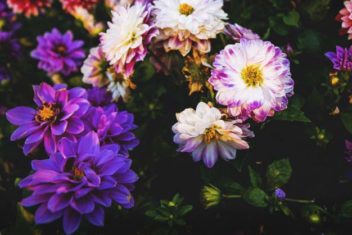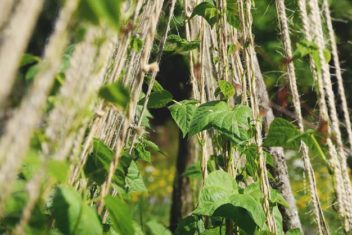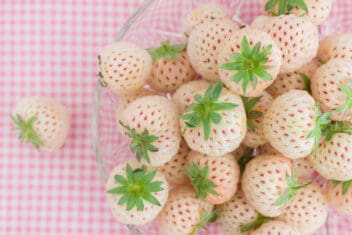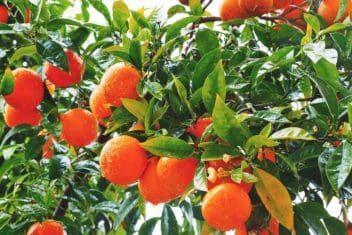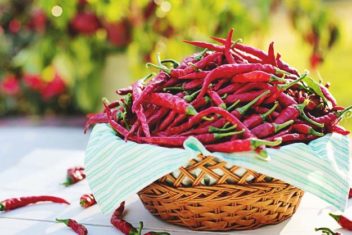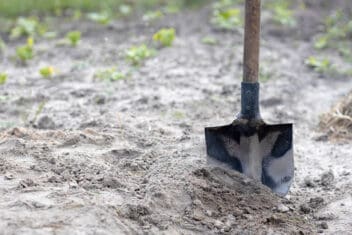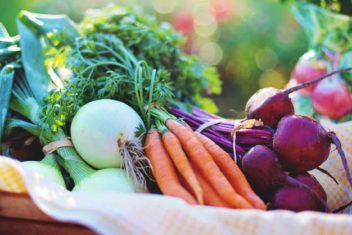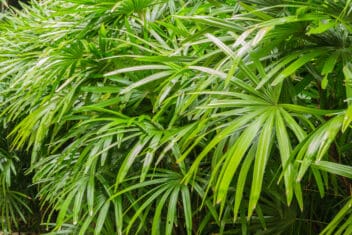Last year, we invested in a 30’ x 96’ hoop house for our farm. A hoop house is almost identical to a greenhouse, offering the same solar and heating benefits to plants – except it’s not a rigid structure and can be moved.
Although we initially purchased the hoop house with the goal of raising sheep and chickens in it during the winter months, we decided to do double-duty by growing heat-loving vegetables like peppers, tomatoes, and eggplants in it over the summer.
Our climate isn’t necessarily ill-suited to growing these heat-loving plants, but the growing season tends to be short. We figured we could get several more weeks (if not months) of extended harvest by growing our vegetables in a greenhouse instead of directly in the ground.
After planting, we quickly realized that we were going to have to stay on top of our irrigation routines. Although plants that like the heat grow rapidly in a greenhouse – largely due to the heat and sun – they also aren’t exposed to any natural precipitation.
If you’re trying to water plants in a greenhouse, here are some tips on watering techniques for your greenhouse.
How is Greenhouse Watering Different From Outdoors?
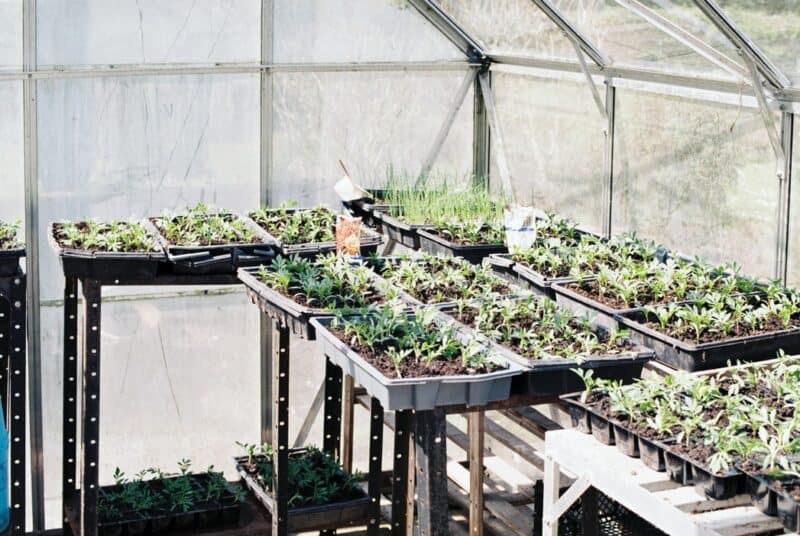
The best part about growing vegetables or other kinds of plants in a greenhouse is that you can give your plants a greater level of specially-targeted care. Since all of the plants are in one spot, you can address their needs in a way that wouldn’t be possible if you were growing them outside.
However, with that control also comes increased responsibility. Since your plants are essentially being grown indoors, they don’t have access to natural precipitation.
“Big deal”, you might be thinking. “That’s no different than if I were growing a container garden indoors!”
Growing plants in a greenhouse is not the same thing as growing them indoors. Like plants grown indoors, greenhouse-grown crops don’t have access to rain. However, unlike plants grown indoors, they are kept at much hotter temperatures. While they aren’t battered by the wind, a drying factor for plants grown outside, they receive intense heat and sunlight.
Your plants are going to dry out much more quickly when they are grown in a greenhouse.
How Often Should You Water Plants in a Greenhouse?
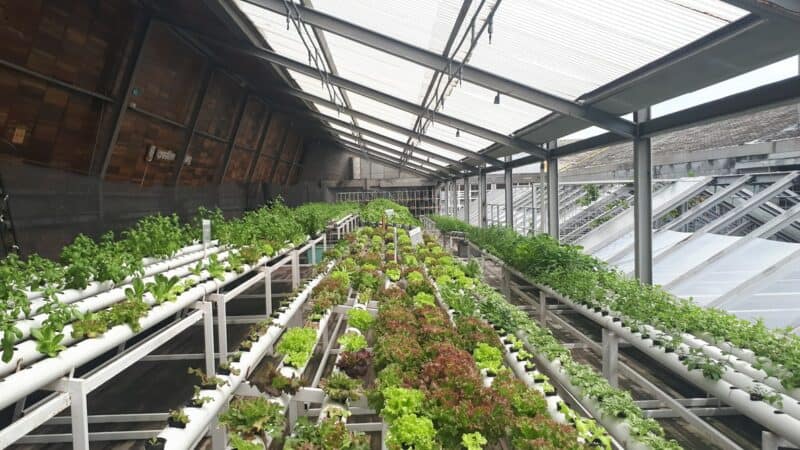
The watering frequency and techniques in a greenhouse will depend on the type of plant you are growing, as well as the outdoor conditions.
Watering too often is ill-advised, as it can cause your plants’ roots to rot. Only water when the first couple inches of soil are dry. Avoid shallow watering unless you’re watering seeds. The soil will dry out quickly.
Thorough, deep watering is usually preferred. If you’re growing plants in the spring or fall (or even the winter), you may be able to get away with watering just once every other day or only a few times per week for certain types of crops. During the heat of summer, though, daily watering might be necessary – or even twice daily.
What is the Best Time to Water a Greenhouse?
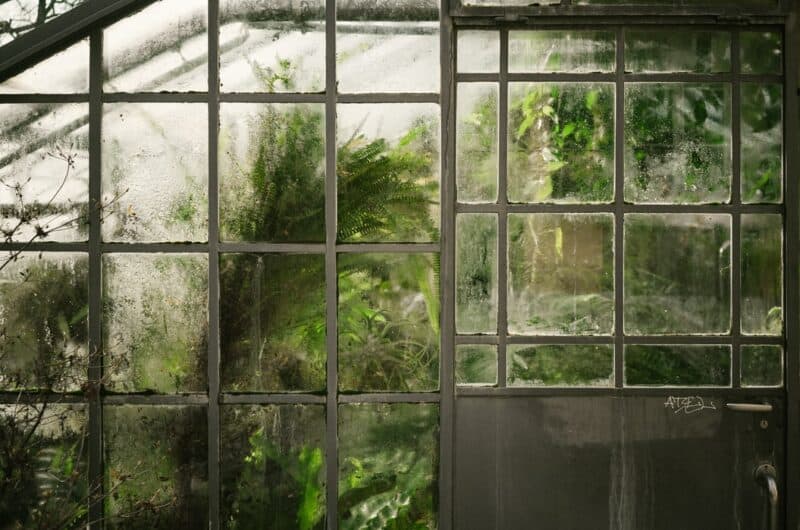
The best time to water a greenhouse, as with plants grown in the garden, is first thing in the morning. This will give the plants time to dry out. You can also water late in the evening to reduce evaporation, but this may mean your plants aren’t totally dry before the sun goes down.
How to Keep Plants Watered Without Damaging Them?
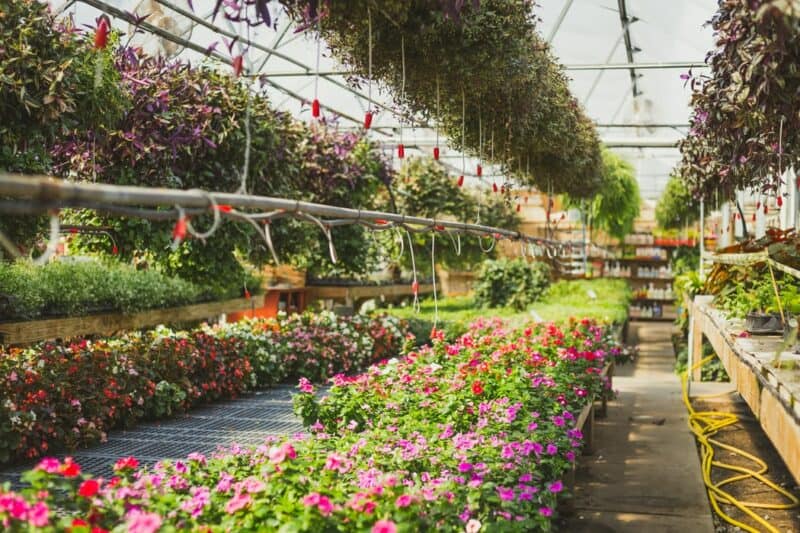
One of the best tips for keeping your plants healthy and well-watered when growing them in a greenhouse is to avoid using super cold water. Plants are just like people, in this regard. Just think about it – do you like getting in the shower when it’s 50°F?
Similarly, plants can be shocked when you use super cold water. You may want to install a plate heat exchanger so you can adjust the temperature of the water. Too-cold water shocks your plants. It can also shock the fragile soil biology that’s feeding your plants, too.
You may also want to use a more delicate misting nozzle when you water your plants. Use a fine mist when you’re setting seeds or setting new seedlings. Your plants don’t quite have the roots in place to support a heavy blast of water. Even if they do, it’s not recommended that you spray them at full volume.
Finally, if your greenhouse watering techniques rely on hand watering and not using drip lines or overhead irrigation, you may want to install some hanging hooks. If you have a long greenhouse, as we do, it is going to be difficult for you to reach all of your plants while standing at the door.
Dragging a hose through the entire greenhouse not only presents a tripping hazard, but it makes it more likely that you are going to crush your fragile plants, too.
It’s also just plain annoying to deal with!
How to Water a Greenhouse While on Holiday?
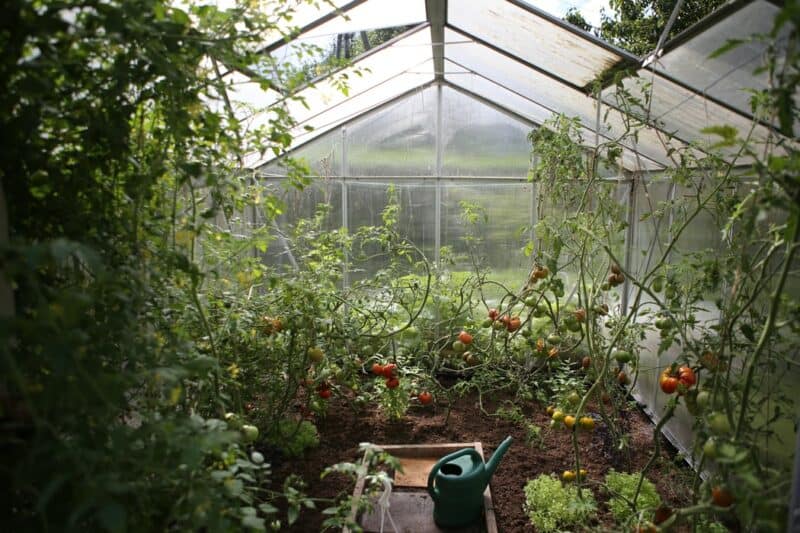
Unfortunately, plants grown in a greenhouse are going to be much more likely to dry out and die from lack of water than those grown in a garden. You’ll need to pay more attention to plants in this setting if you’re headed on a vacation.
Consider reducing temperatures by giving the ground a deep soaking and then covering it with a layer of mulch. Keep the vents and doors wide open and consider adding some shade netting to keep your plants cool.
A drip irrigation system on a timer is another good way to deal with watering if you plan on heading out on a holiday.
Professional Greenhouse Watering Tips
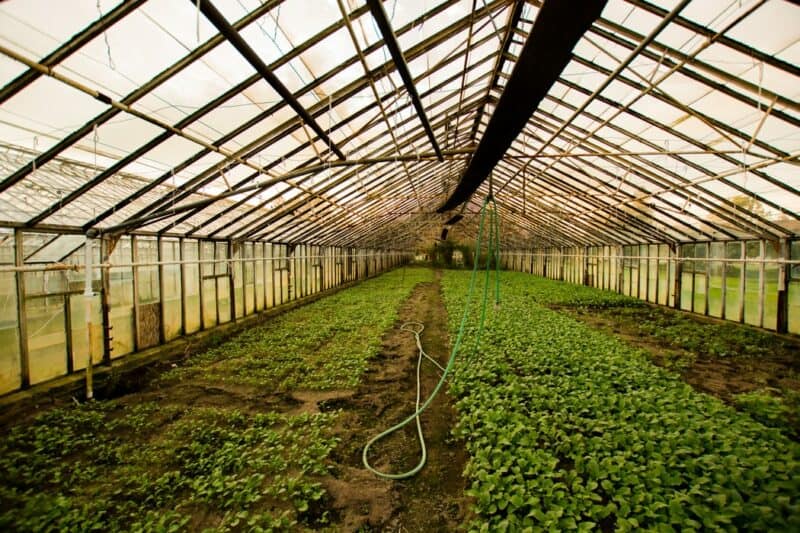
There are several tips you can follow when applying your watering techniques in your greenhouse. For starters, you will need to decide whether automatic watering systems or hand watering make the most sense for you.
Consider the needs of your plants. Drip greenhouse irrigation works well. You can direct small or large flows of water to your plants, regulating both with a flow gauge and timer. This is inexpensive and easy to maintain.
Overhead watering works well if you are growing a greenhouse of all different kinds of plants. You can also use capillary mats, which work well under flats and pots. They pass water slowly via a method known as sub-irrigation. This reduces evaporation and also prevents overwatering, too.
1. Group Plants with Similar Water Requirements Together
If you are going to grow plants of different watering needs all in the same greenhouse, you should group similar plants together. For example, peppers and tomatoes can be planted together, but cucumbers should be planted in a separate cluster.
Even if you’re hand watering, this makes it a lot easier to target your approach so you aren’t applying too much or too little water to all of your plants.
2. Mind Your Spacing
Spacing is important no matter where you are growing plants, but in a greenhouse, it’s even more important. It’s going to be challenging to water plants that are densely clustered together if you’re growing them in a greenhouse – you’ll have less room to maneuver and you will be more likely to rip one out of the ground with your hose.
Plus, plants that are clustered too close together are going to be more prone to fungal diseases due to the decreased circulation in a greenhouse.
3. Overhead Watering Systems for Greenhouses
Overhead watering techniques in a greenhouse can be expensive. However, it’s worth the effort. You will be able to better control the timing, flow amounts, and delivery of water to your plants.
Using an overhead watering system is not efficient, though, if you are growing plants that all have different watering needs. You will want to make sure the needs of each plant are addressed. This will allow you to better control the frequency and duration of irrigation.
Overhead watering can cause some plants to be overwatered while others are underwatered. If you have a diverse greenhouse array, consider hand watering instead.
4. Watch for Excessive Moisture
Yes, plants need to be kept well-watered – but you also need to watch out for too much moisture. Plants like to be moist, but not wet. Too much moisture in the greenhouse can lead to fungal diseases. In fact, fungal diseases are just as common (if not more so) in a greenhouse. This is due to the lack of air circulation.
Therefore, you’ll need to be conscious of how well your plants are drying out. If possible, install ventilation systems. This will allow your plants to stay adequately hydrated without presenting the risk of fungal infection.
Remember that your plants’ needs for water will be much lighter on cloudy days than on sunny ones, too. You may not need to water as often on a cloudy or rainy day.
5. Install a Collection Tank
If you live somewhere in which water use is restricted, you may want to consider installing an outdoor collection tank. This will allow you to store and recycle rainwater to be used in your greenhouse. Many times, these can be plumbed to drip or overhead irrigation systems for the greenhouse, too.
If you are planning your new greenhouse, keep these tips in mind and follow my practical advise. Since we had to learn the hard way, there is no need for you to struggle with watering your plants – good advice and good planning will save you a lot of pain, and keep your plants happy!
